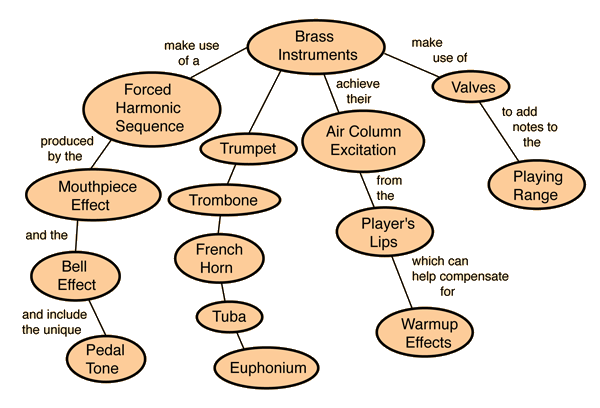Acoustics is the branch of physics that explores the generation, propagation, and reception of sound waves. When we shift our focus to musical acoustics, particularly within brass instruments, an amalgamation of physics, craftsmanship, and artistry becomes apparent. But have you ever contemplated how the resonant characteristics of the brass section interplay with human emotion? This exploration asks: how might our understanding of acoustics refine the artistry of musicianship, and what challenges arise when merging science with performance?
The brass section of an orchestra is primarily composed of instruments like trumpets, trombones, tubas, and French horns. Each instrument possesses distinct acoustic properties due to its unique construction and design. Understanding these acoustics is foundational to both crafting these instruments and mastering their use in performance. This article delves into the intricate physics behind brass instruments, illuminating how wave phenomena, resonance, and harmonic overtones contribute to their soundscape.
Brass instruments belong to the category of wind instruments, which produce sound through the vibration of air within a tubular structure. Player-generated lips produce a buzzing motion which creates pressure waves that travel through the air column. The fundamental frequency, or the lowest frequency of vibration, primarily determines the pitch of the note produced. However, the timbre—often mistaken solely for tone quality—arises from a complex tapestry of overtones and harmonics, layering richness into the instrument’s sound.
To fully appreciate the brass section’s acoustics, one must first understand the concept of resonance. When a player buzzes their lips, the air column inside the brass instrument vibrates at multiple frequencies simultaneously, each corresponding to different harmonics. These harmonics can be explored mathematically, with the overtone series revealing how certain frequencies are naturally amplified. The quality and intensity of sound relate not only to the inherent design of the instrument but also to the player’s technique and breath control.
Harmonic series in brass instruments begin with the fundamental, typically analogous to the first frequency a musician will perceive. Subsequently, the overtone series emerges, with harmonics following in order. For instance, if the fundamental frequency for a tuba is 65 Hz, the subsequent harmonics will resonate at multiples of this frequency, such as 130 Hz, 195 Hz, and so forth. The challenge for brass players is to navigate these various harmonic layers effectively, showcasing the depth of emotion and storytelling through their music.
In constructing brass instruments, a multitude of design elements must be taken into consideration to optimize acoustical performance. The bell shape, material composition, and length of the tubing all dramatically affect the sound quality. For instance, the flare of the bell influences the dispersion of sound waves into the environment. A wider bell allows for a broader projection of sound, which can enhance the overall blending of the brass section with other orchestral instruments.
Moreover, the material used in the construction of brass instruments plays a pivotal role. Traditional brass alloys, primarily composed of copper and zinc, exhibit varying damping characteristics. Damping refers to how quickly sound waves lose energy and are absorbed by the material. This energy absorption can alter the overall brightness or warmth of the tone, adding another layer of complexity to the brass instrument’s sound.
The practice of valve systems in instruments like trumpets and tubas introduces additional complexity to the control of pitch. Valves function as shortcuts within the instrument, extending the length of the air column without altering the physical dimensions of the brass itself. This innovation allows a musician to manipulate the fundamental pitch freely, expanding the harmonic possibilities available while maintaining harmonic integrity.
What of the challenges posed by acoustical physics in performance settings? While understanding the theoretical underpinnings of brass instrument acoustics is vital for makers and players alike, bridging this knowledge with live performance can prove difficult. For instance, external factors such as acoustics of the performance space and audience dynamics can significantly impact sound production. Musicians often confront the task of adjusting intonation based on environmental variables, necessitating acute auditory discrimination and adaptability.
In recitals and orchestral performances, the brass section operates as a cohesive unit. However, the interplay between individual instruments produces a rich tapestry of sound that can either create harmony or discord depending upon the synergy of the players. Each instrument’s timbre affects how sound waves interact and how they project within an ensemble setting. The challenge becomes not only one of technical skill but of collaboration and mutual acoustical perception.
As we convene the realms of acoustics, physics, and music, an essential question arises: how can musicians leverage their understanding of acoustical properties to enhance their artistic expression? It beckons further inquiry into pedagogical approaches that intertwine scientific principles with musical training. This fusion could potentially foster a new generation of musicians equipped with a profound comprehension of the art and science behind their craft.
In conclusion, the investigation into brass instrument acoustics reveals a sophisticated interplay of physics and artistry. By appreciating the principles of resonance, harmonic structure, and material implications, brass players can elevate their mastery. Moreover, as they confront the sonic challenges posed during performance, an enriched dialogue emerges—one that not only celebrates technical aptitude but also emotional depth, thus manifesting music as a universal language cognizant of its scientific essence.










